The Fuji Speedway Hotel stands adjacent to one of the world’s most renowned circuits. The focus of the artwork is to showcase the fun and power of motorsports through artistic expression. With the cooperation of Toyota Motor Corporation, much of the artwork utilizes parts of retired racing cars that, in its years, had competed in actual races. In addition, original artwork designed by ICA creates an intriguing space for motorsports fans. Below we feature the production process of some of the central art pieces.
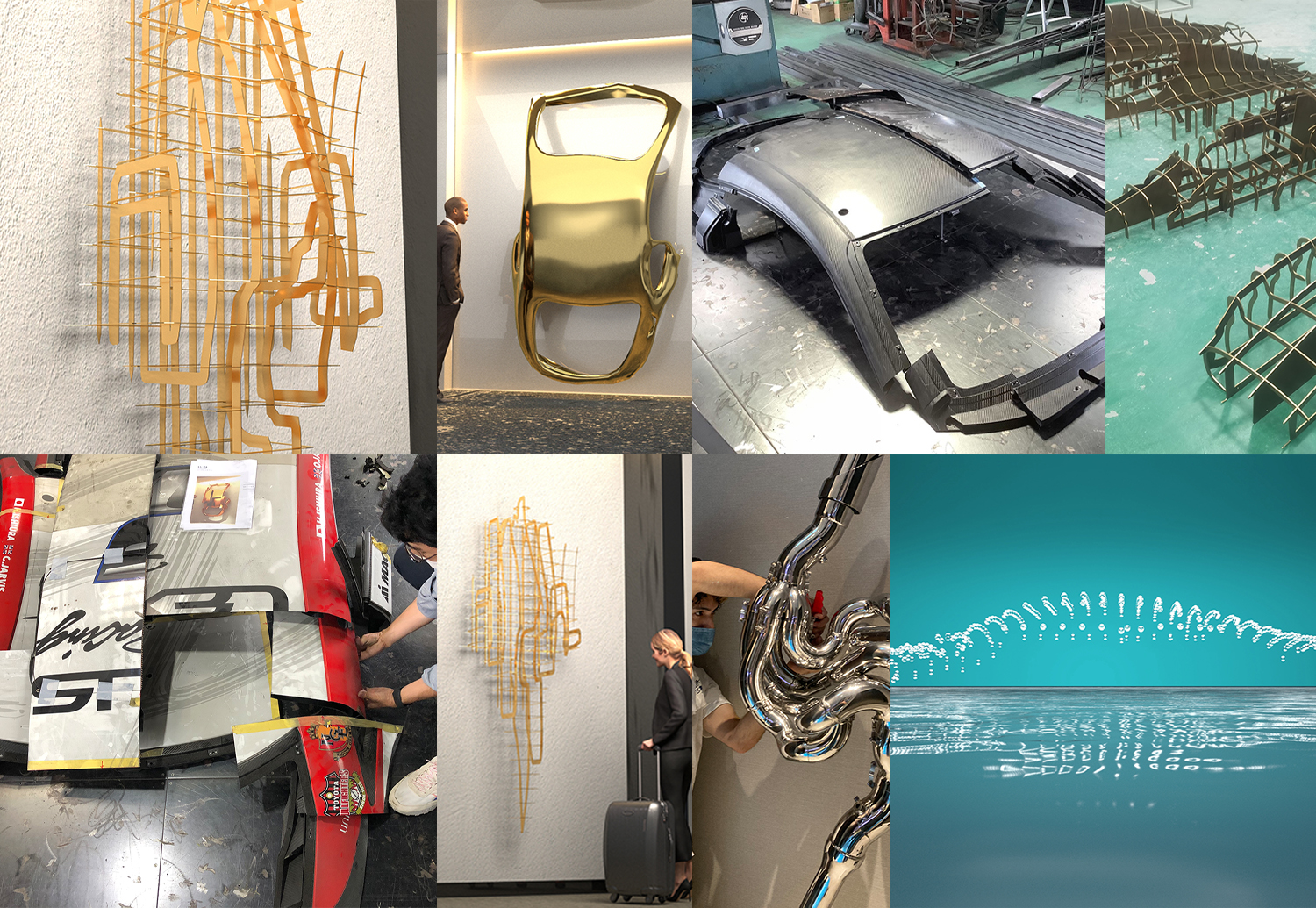
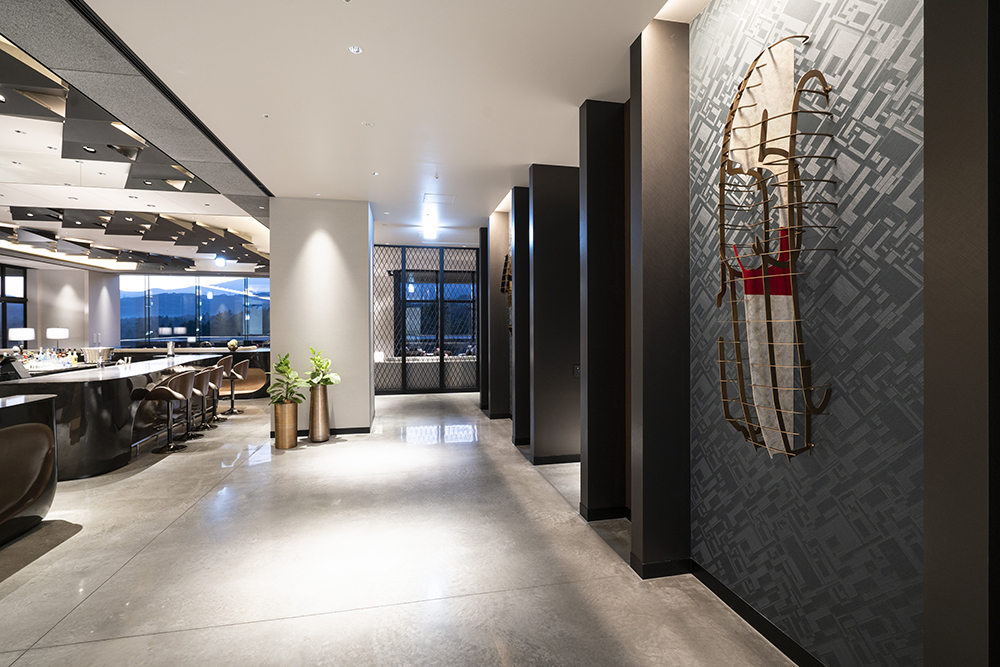
3F Reception Lobby: Waffle Structured Cars
We created an artwork modeled after an F1 car for the lobby wall. When creating the artwork, the intention was to depict “cars that have been stripped down to the bare essentials in pursuit of speed,” meaning an essential focus on material selection, weight reduction for wall mounting, and aesthetics. Hence, we applied a construction method called “waffle slab construction,” which is rigid and lightweight. The streamlined shape, unique to formula cars, was abstracted and assembled. Each design was modeled based on a representative race car of each era to illustrate F1 history, complete with accents of color on the car body.

Molding the base structure based on an actual F1 car

Rendering to verify the most suitable design for the interior space

Left: Creating a production drawing based on the verified structure
Right: The finished body. A design representing each car body was applied and completed as art.
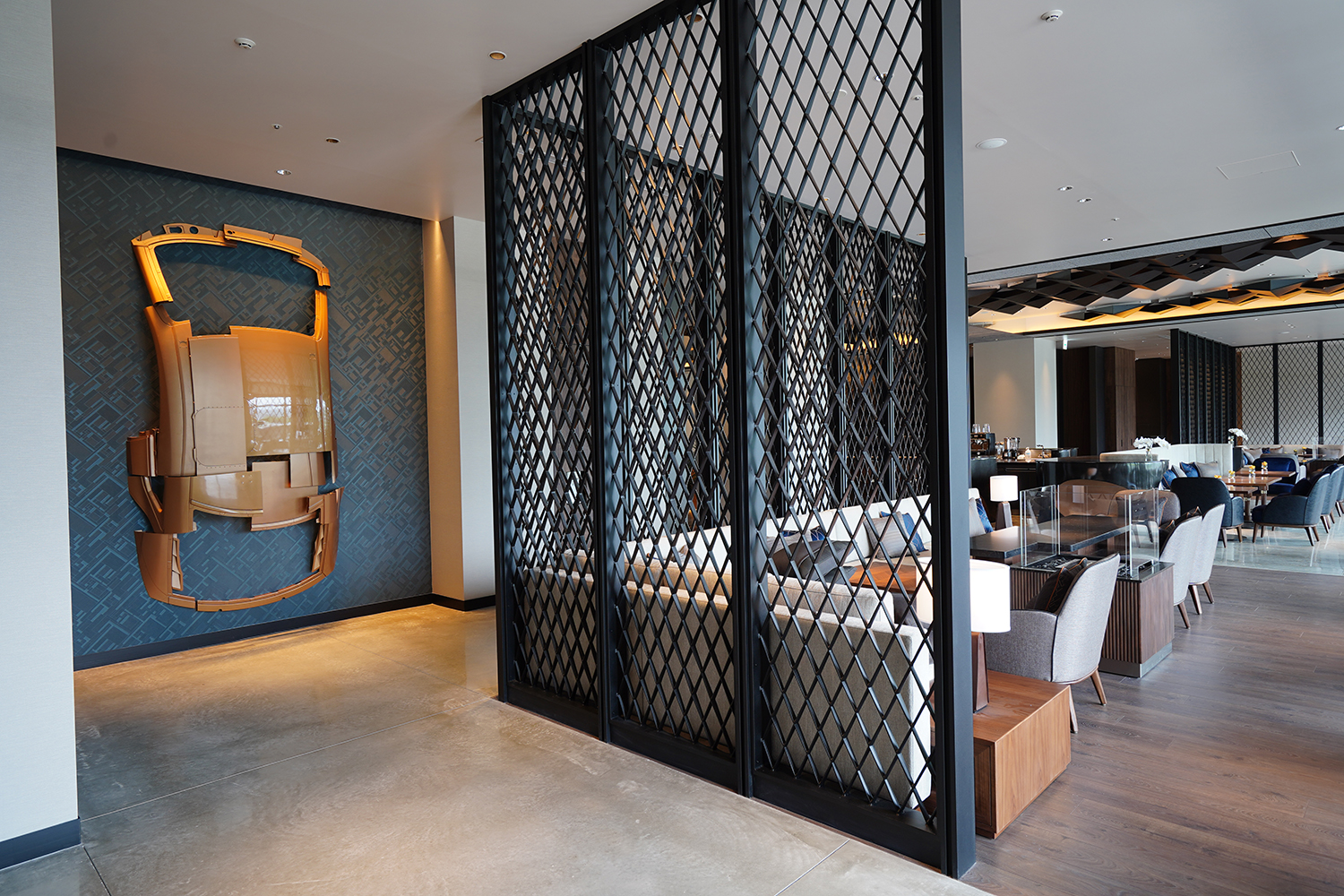
3F Reception Lobby: Racing Car Object
Another artwork created for the lobby is a racing car wall sculpture. We were supplied with a racing car once used in races around the circuit and reproduced it as artwork. We went through a series of design studies to determine how we could recreate the car body, which is already an attractive design and a fan favorite. The focus of the final product was to give it a new value as art while keeping the appeal of the car body.
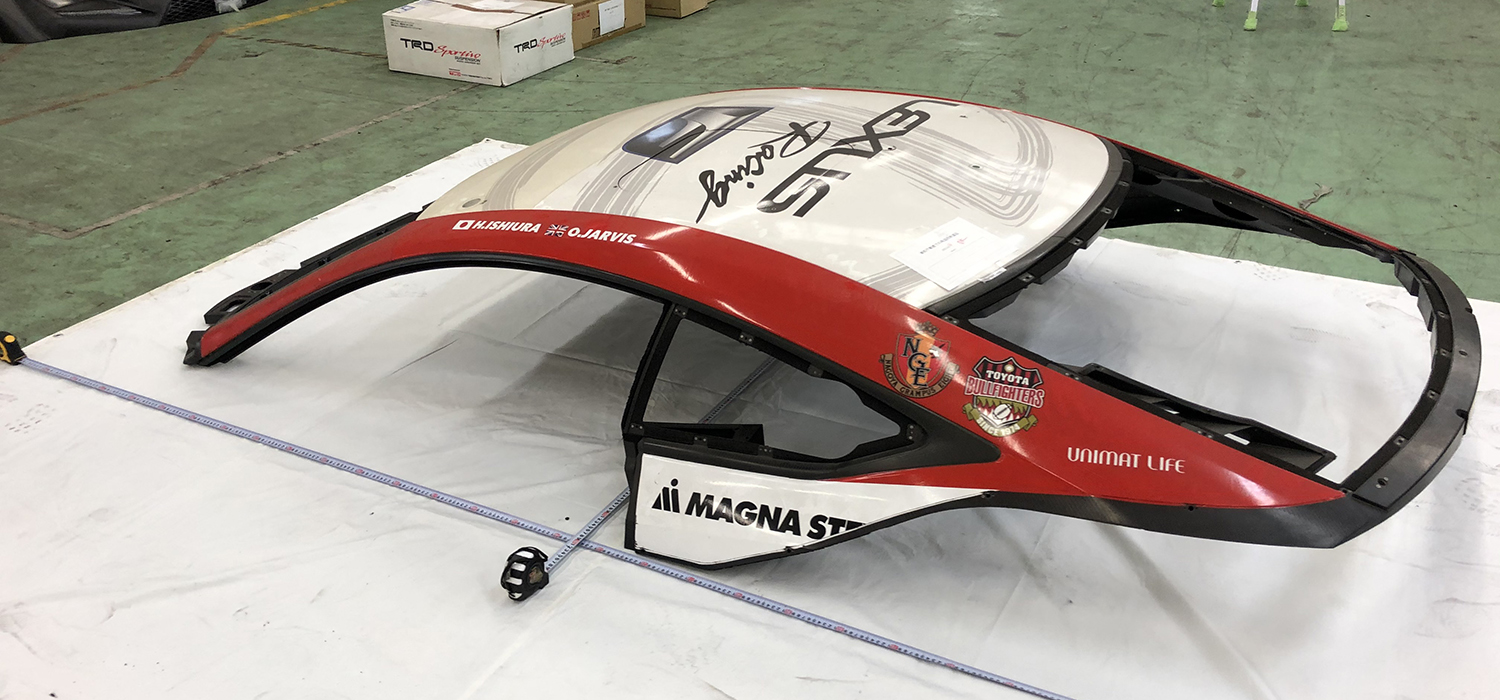
The original racing car

Design study
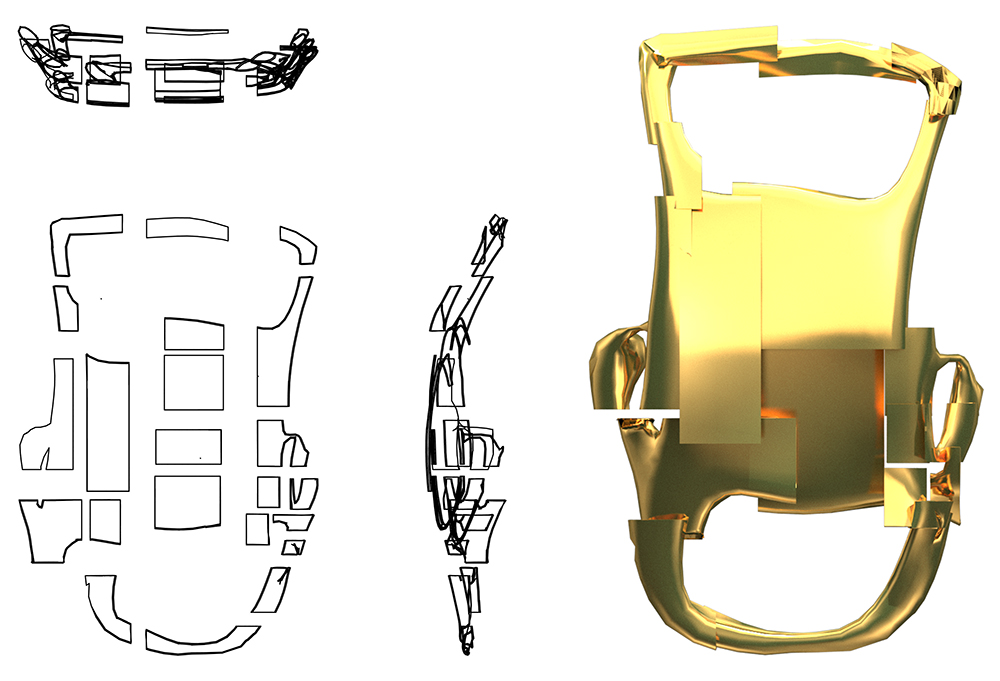
Production drawing

Manufacturing based on production drawings

3F Lobby: Exhaust Pipe Sculpture
Here is another example of artwork created using racing car parts. For the restaurant entrance, we worked with sculptor Tomoya Tachibana to create a sculpture made of exhausting pipes from a racing car engine. The size was carefully studied considering the space, an aisle, in which it would be installed. With safety considerations in mind, the design was developed utilizing the distinctive shape of the exhausting pipes to transform it into an unique sculptural work.
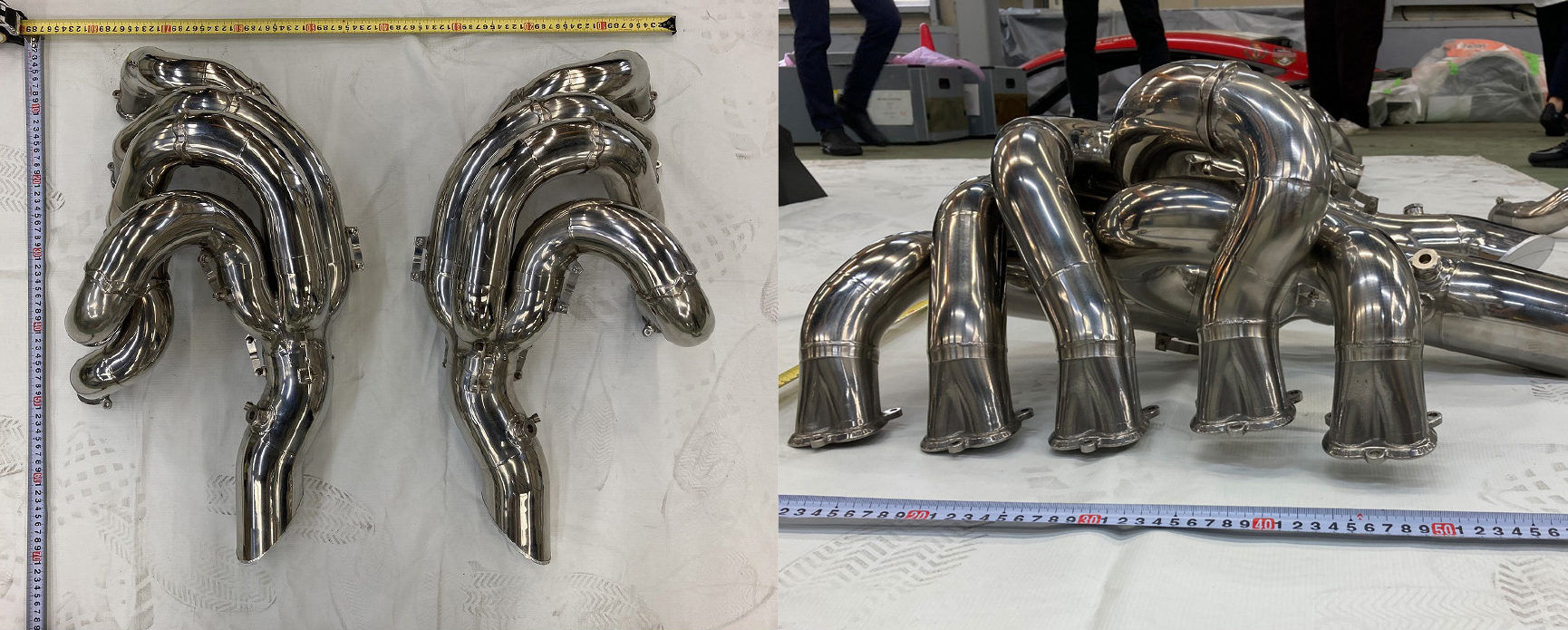
The exhausting pipes that became the material of the sculpture
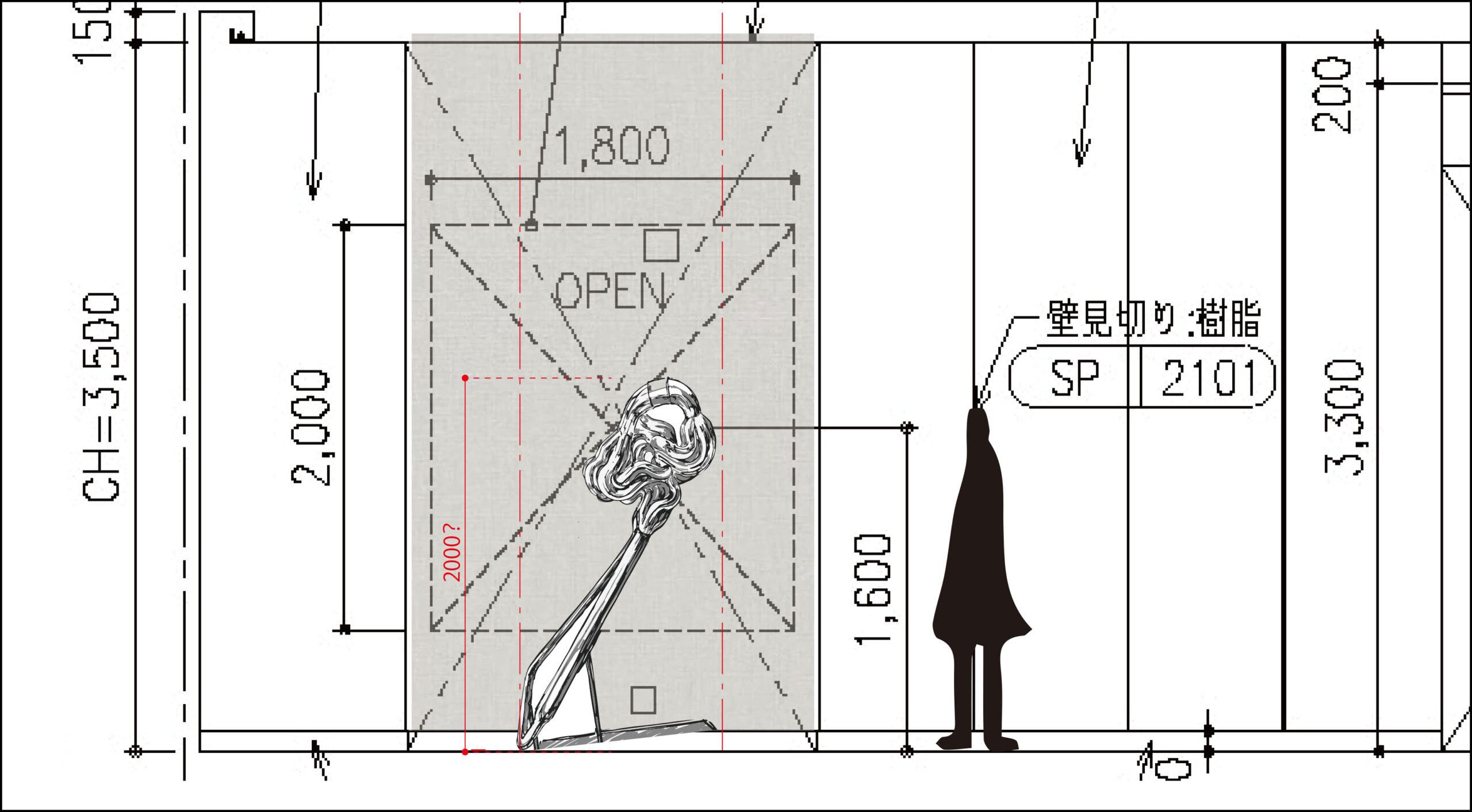
Verification of size and installation positioning on site
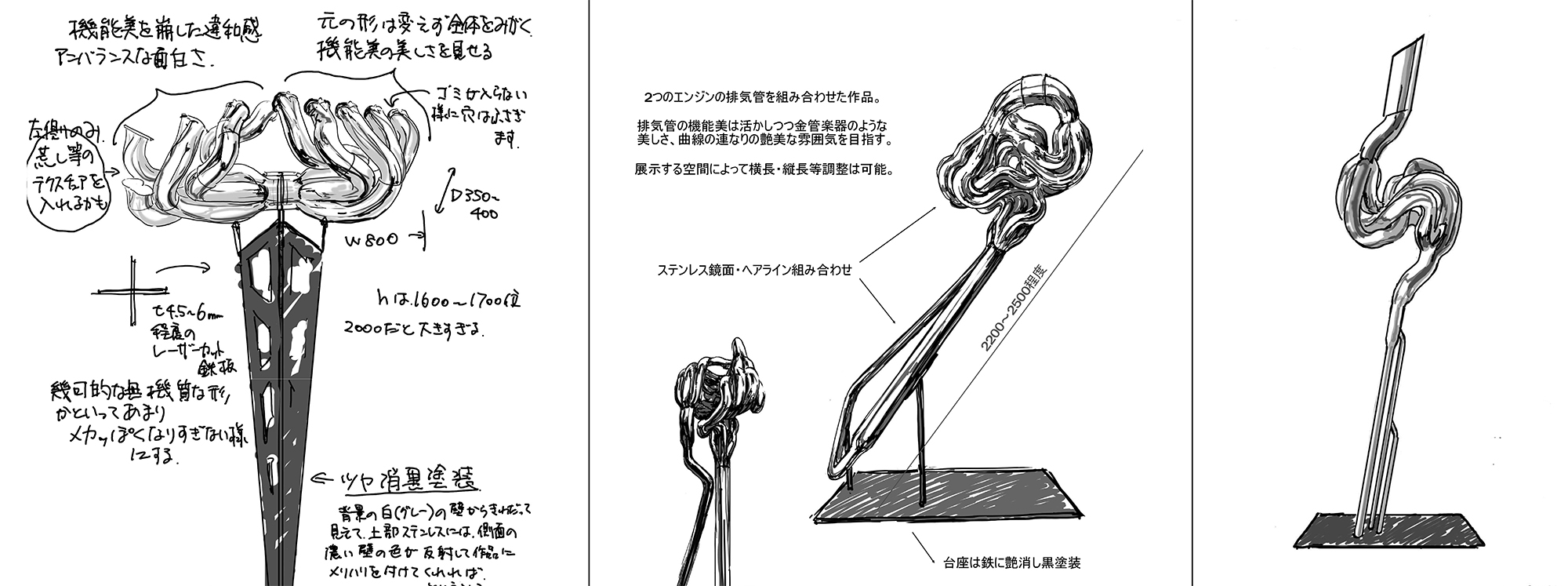
Left/Middle: Design studies
Right: Final design sketch
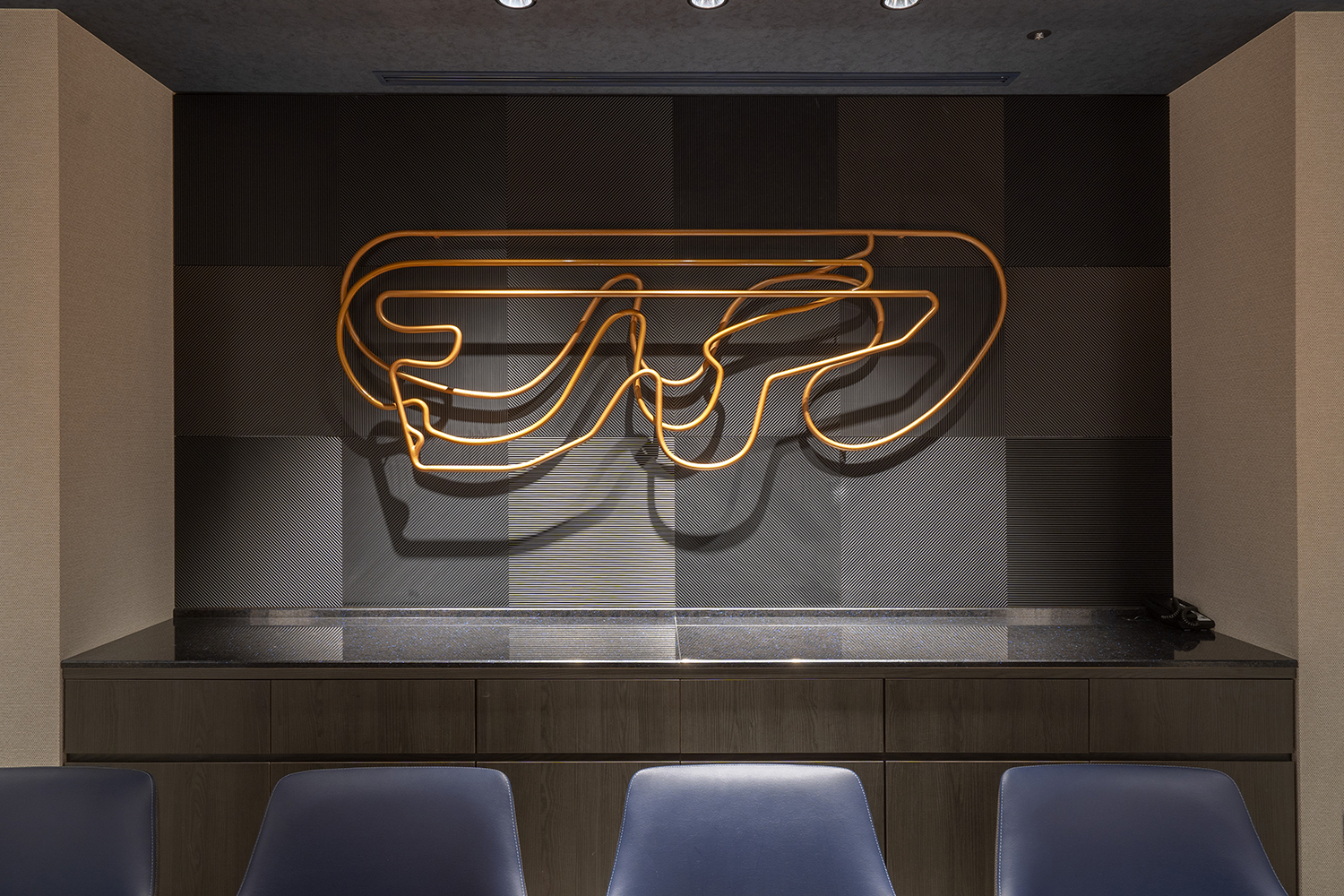
3F Dining: Circuit Art
During its long history, the Fuji Speedway racetrack has undergone several layout changes since its establishment. From the nostalgic retro circuit for old fans to the modern style of today, the artwork has three layers: the original course at the back, the mid-term course in the middle, and the current course in the front, so that the transition is felt three-dimensionally.
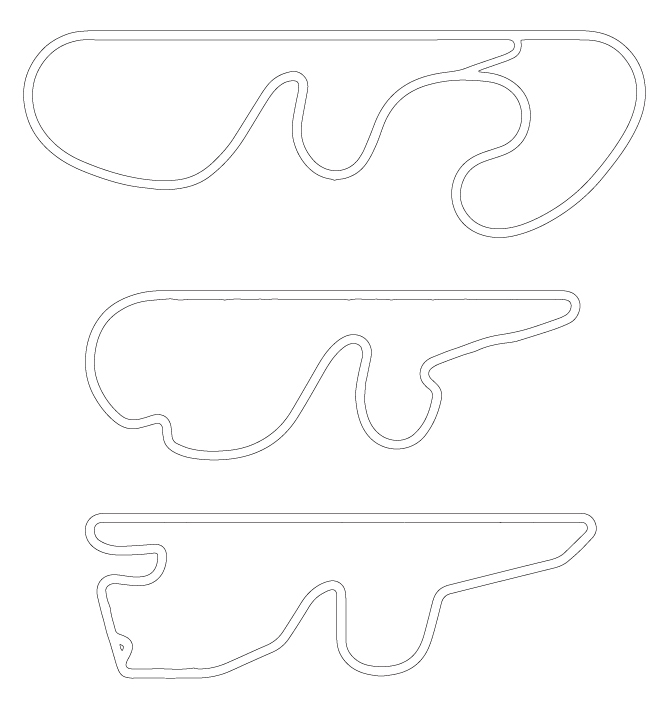
Top: Original course layout 1966-1974.7
Middle: Mid-term course layout 1987-2003
Bottom: Current course layout 2005-

Production drawing
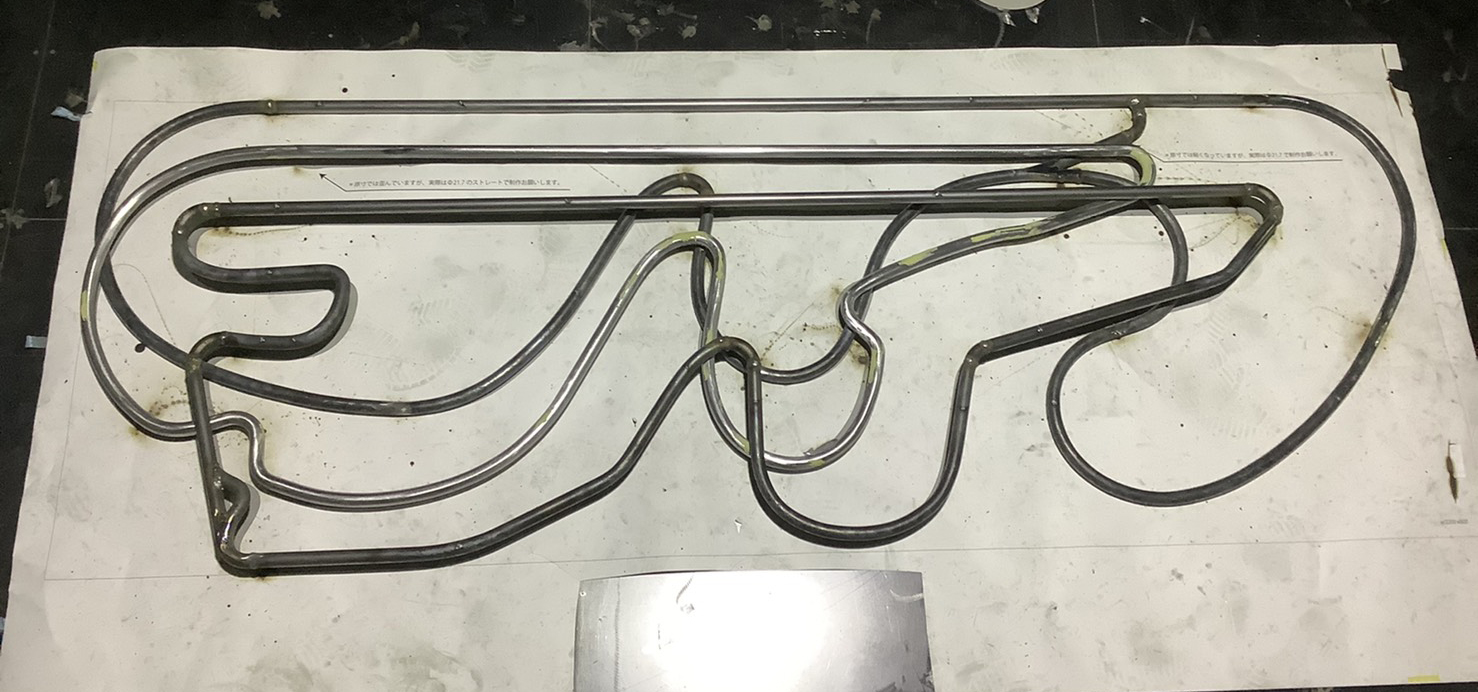
A circuit object assembled based on the production drawing

1F Spa: Floating Car
To decorate the poolside of the motorsports-themed hotel, we created hanging art in the shape of a sports car. We chose glass as a material for the sports car floating in the air to evoke images of water and flowing air. Each piece of glass created by glass artist Chisa Imamura feels like a form of art itself. The modeling process was performed by scanning the actual sports car, converting it into data, studying the beauty and efficiency of the structure, making adjustments based on the installation space, and verifying the results by making scale models.
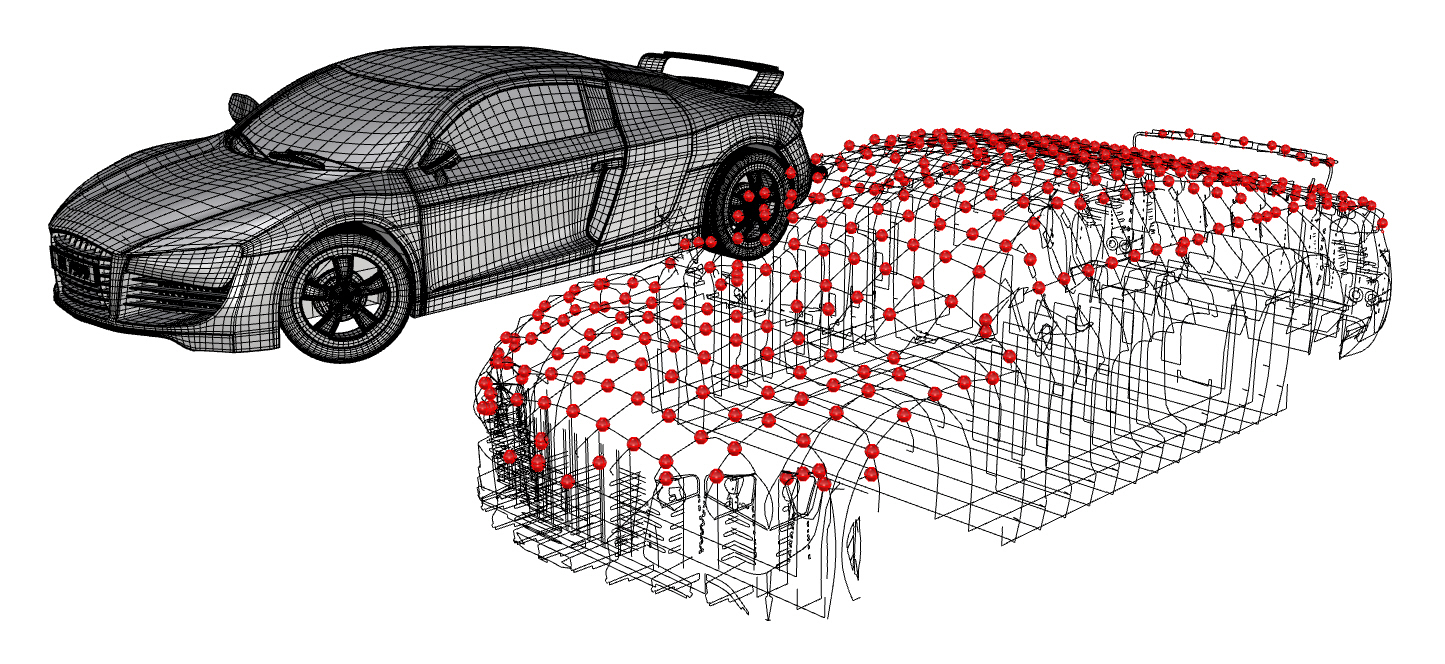
Scanning structures from real sports cars
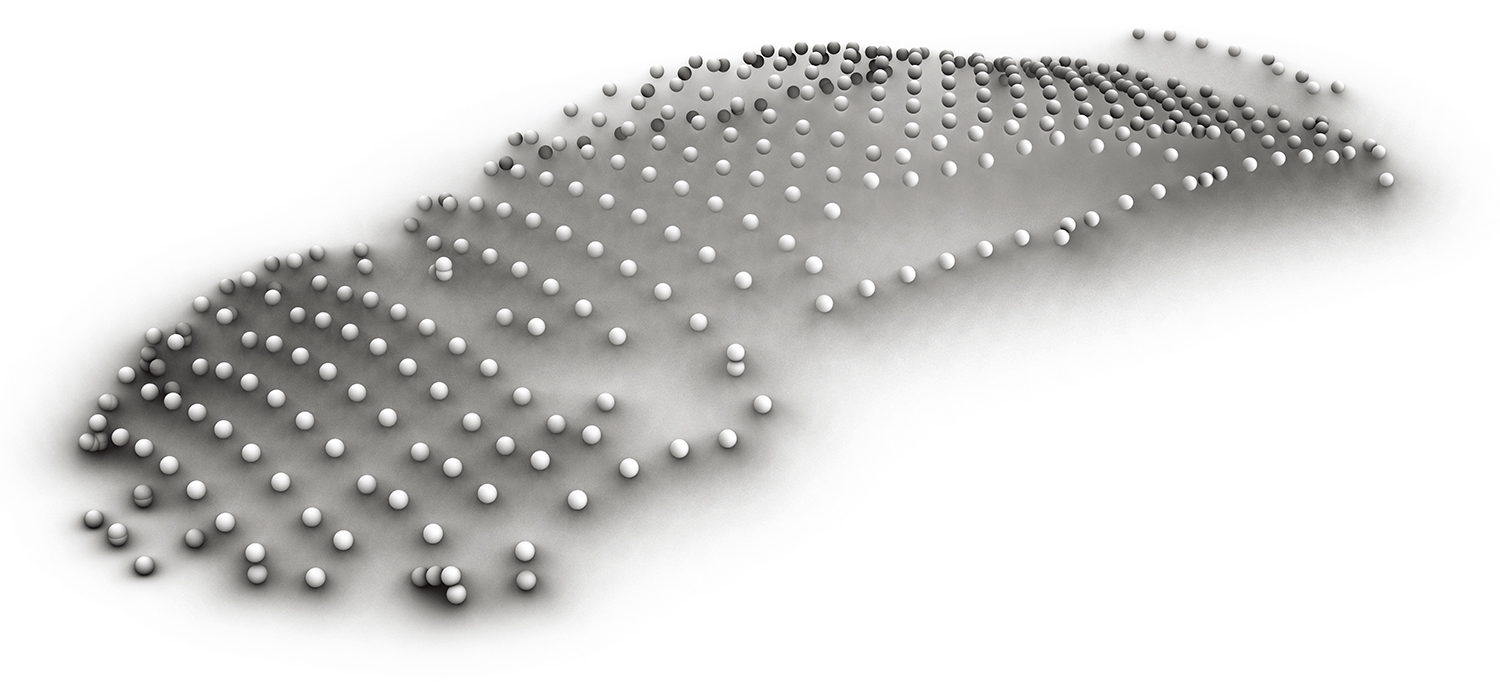
Creation of base design based on scan data
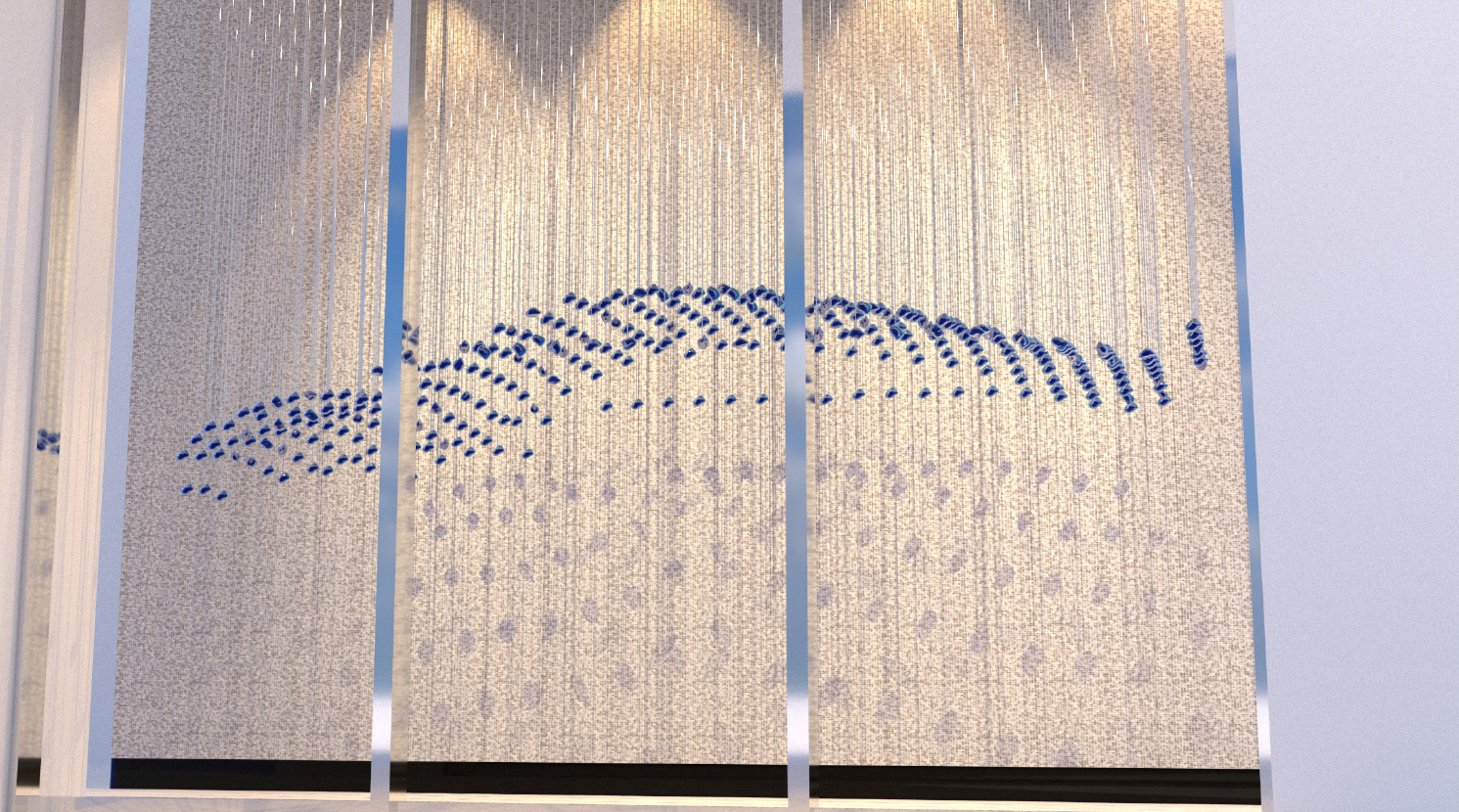
Design form adjustments based on spatial considerations
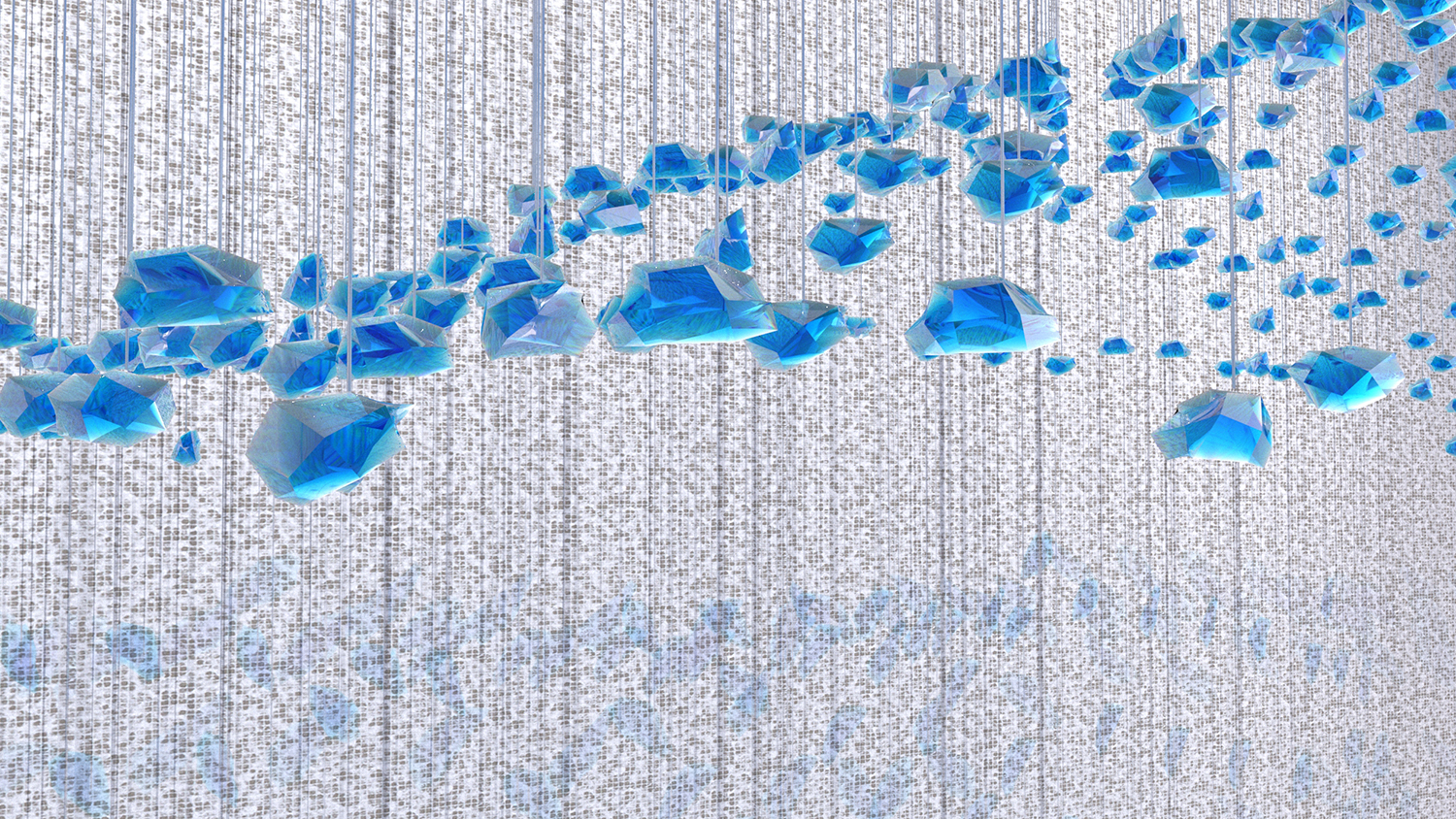
Material study in collaboration with glass artist

Installation structures
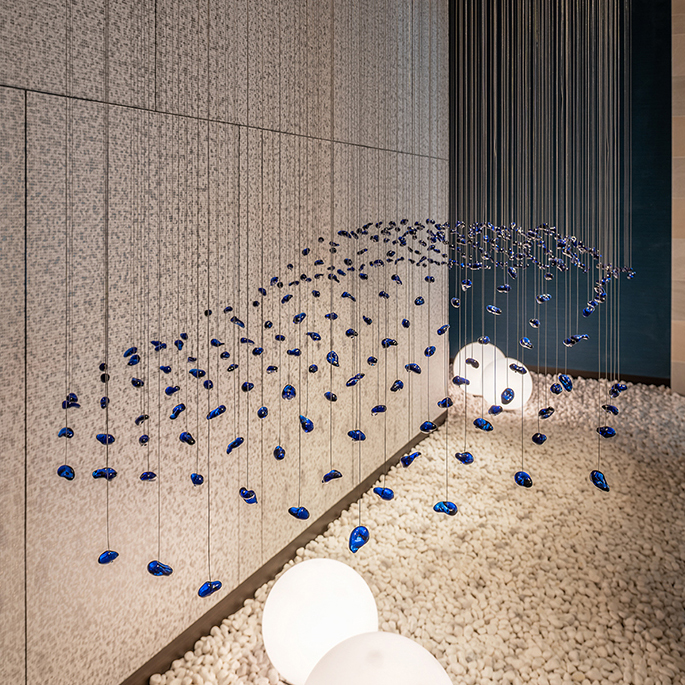
Actual installation
Projects > Fuji Speedway Hotel